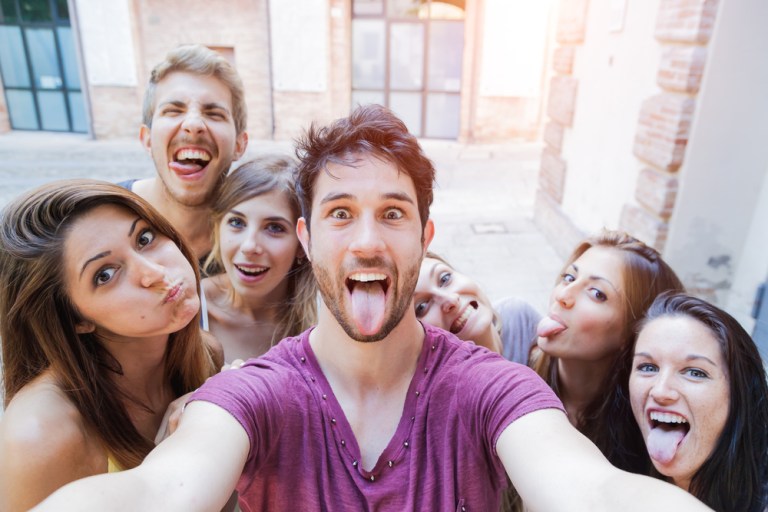In Praise Of The Selfie And The Commerce It Drives

National Selfie Day has passed into the history books once again.
For those us who need a few days to let go of important holidays — warm emotions can take time to fade — perhaps a trip down memory lane will prove helpful, along with a look at where this nearly 200-year-old art form and increasingly important tool of commerce is leading us.
The Debbie Downers among us denigrate selfies as a decadent expression of narcissism — the elevation of self-love over the common good, another sign of the crumbling of Western civilization. Maybe they’re right.
But what is the history of art, low and high, if not a tightening focus on the individual and the individual condition? And what is the development of commerce in this digital age if not an increasingly efficient machine that is well on its way to anticipating what individual consumers want to buy before their conscious selves even realize it?
Anyway …
The founding hero of National Selfie Day — not that he receives his full recognition among the selfie masses — is a U.S. lamp manufacturer and early photography enthusiast named Robert Cornelius. He is widely credited with producing, in 1839, a hazy, somewhat blurry photograph of his face and upper body that has come to be known as the first proper selfie. Granted, he had to sit motionless for up to 15 minutes, according to estimates, but he got the job done and secured his place in history (or, least, earned a page on Wikipedia).
Now let’s do a match cut to outer space — like that famous early shot of the bone being tossed in “2001: A Space Odyssey” — where, during the Gemini 12 mission in 1966, U.S. astronaut and still-living tough guy Buzz Aldrin took his own self-portrait. As Aldrin reminded the world this week via Twitter, that photo stands as the “first selfie from space,” he wrote. “That was one expensive selfie stick!”
Neither the image produced by Cornelius nor the space selfie by Aldrin had any immediate commerce applications — to put it mildly — but there is no doubt those photographs, the achievement they represented and the future they foreshadowed influenced men and women who would go on to make advancements in retail and technology. Tracing those connections would require a doctoral dissertation, so let’s just agree to agree and move on.
Anyway …
We are now in the golden age of the selfie. The form is popping up all over the commerce and payments industries. For instance, BBVA recently demonstrated a selfie payment system based on facial recognition. Customers can buy items by looking at a camera in a booth adjacent to cash registers. Once the system recognizes their faces, it charges them for their purchases.
As well, AiFi, a U.S.-based tech firm that recently won a Visa award for its cashless grocery store concept, is on the road toward bringing facial recognition technology to those merchants.
Retailers are also relying more on selfies — or at least experimenting with the form.
McDonald’s, the high holy of fast food culture, marked National Selfie Day with a promotion that gave out styluses with which customers could operate their phones without using their “greasy” fingers, according to The Washington Post. The marketing effort also included a “custom hashtag” for selfies and a joint effort involving Kirby Jenner, a model who is also an Instagram influencer, to teach people how to take “hotter, juicer” selfies, the report said.
Brands are turning narcissism into cold hard cash.
But golden ages do not last forever, and evidence of the transmutation of the classic selfie form — and its probable use in commerce and payments — is getting easier to find. Samsung, for instance, is among the companies helping with the trendy alchemy of turning selfies of people into emojis, which can be used to further personalize messages sent via mobile devices.
Snapchat, meanwhile, has “two new features to its Snap Map, called Weather and World Effects, that make it easier to see what your friends may be up to,” according to a recent report in Mashable.
The features don’t directly rely on selfies, but they do, in a way, show where the use of imagery inspired by the 1839 Cornelius self-portrait is headed as the 21st century chugs along.
“Weather Effects adds animations based on what the weather is like wherever your friends are. Zoom in on their Bitmoji on the map, and you’ll see animated raindrops, or sunshine, or snow depending on where they are,” the report said. “Similarly, World Effects adds animations to mark events that are culturally significant in some way. Snap says they’re meant to be more of a ‘surprise,’ but these could include confetti on your birthday or other holiday-themed effects.”
Anyway ….
Selfies have come a long way since some guy no one has really heard of had to sit still for more time than most working adults would probably find possible today. By the time the next National Selfie Day rolls out — start preparing early — it’s hard to predict what gifts of social media, commerce and payments our apparent narcissism will bring us.